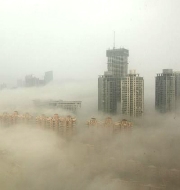Why most measures taken to tackle pollution (in NCR) are episodic rather than strategic responses?
Delhi is one of the most polluted cities in the world. To address this crisis there is a need of a strong policy support.
Measures taken to address the pollution crisis
- Regulating the use of firecrackers.
- Odd-even restrictions.
- SC ban on 2,000 cc+ diesel engines which was later lifted.
- Aiding mechanization of harvesting to prevent stubble burning.
- Mechanized sweeping and water-sprinkling of roads.
Why episodic responses not make much difference
- Odd-even didn’t make much impact because vehicles accounted for around 9% of the city’s pollution and just a tenth was due to 4-wheelers that were affected by odd-even restrictions.
- Road dust contributes 56% and 38% of Delhi’s PM10 and PM2.5 pollution; industries including power plants are responsible for over 50% of the NOx pollution.
- Crop stubble burning in Haryana and Punjab adds considerably to NCR.
Tackling pollution
- The sides of the roads could be paved or covered with grass that holds the soil together and stops the production of the dust
- Improving the efficiency and efficacy of public transport will aid in reducing the vehicular density on roads.
- Completing the peripheral highways around the capital to lower the movement of trucks into Delhi region.
- Improving the waste management practices so that the garbage dumps are not fired. There has to be a comprehensive solution for segregating and processing waste.
- The initiatives for mechanization for harvesting must be further expanded to reduce the stubble burning to zero.
Short-term solutions like green-crackers and community fireworks may help, but only as a few short gasps. There is a need of a comprehensive strategic policy to address the challenge of pollution.
Topics: GS-III: Conservation Environmental Pollution Degradation


